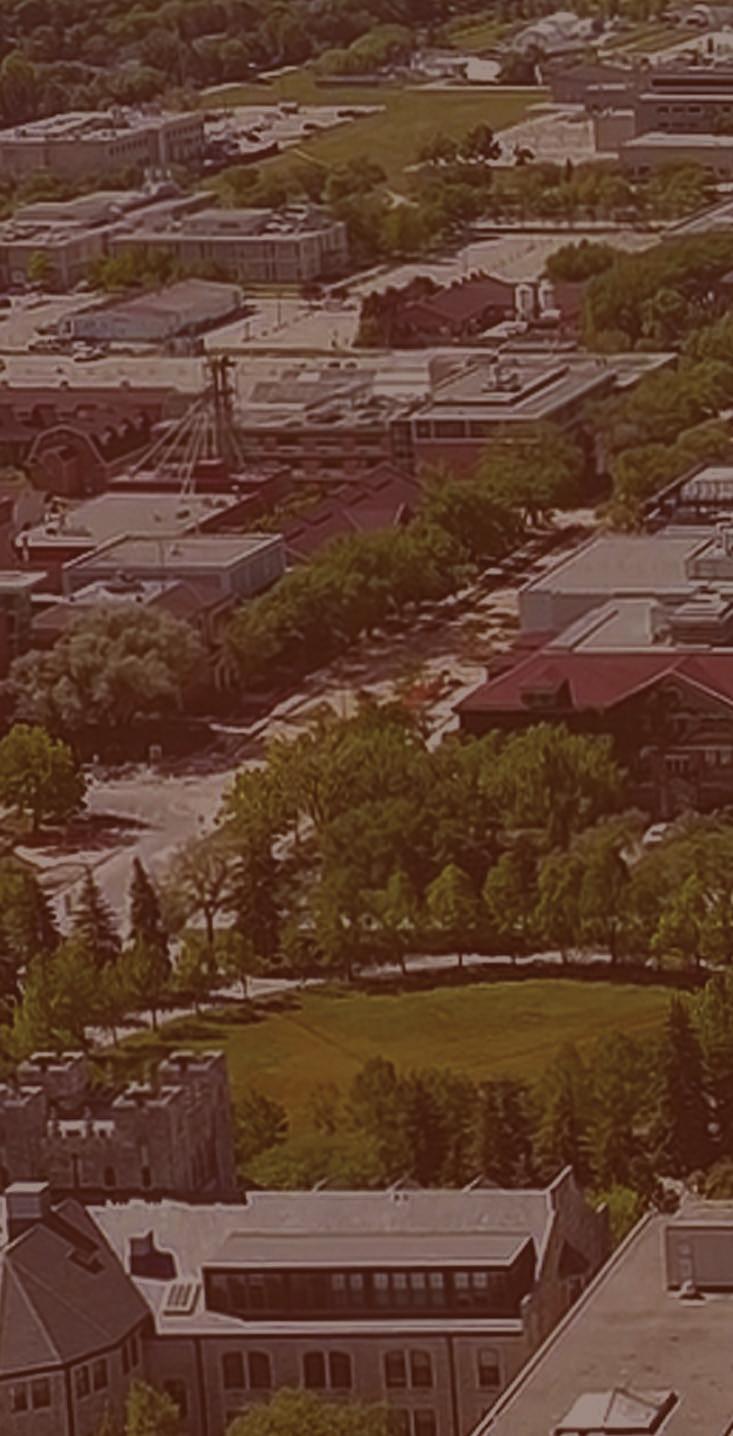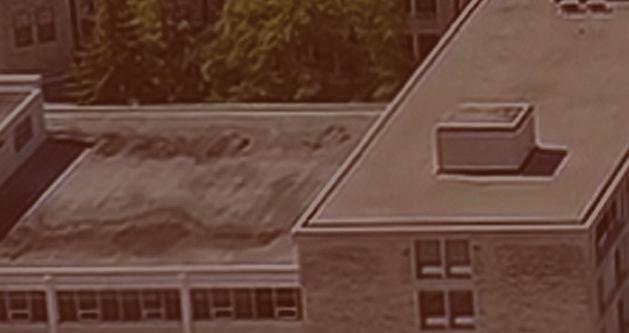ANNUAL REPORT

ARCHITECTURAL & ENGINEERING SERVICES (AES)
























July 31, 2023

























TABLE OF CONTENTS






01 Introduction 02 02 Infrastructure Renewal Plannning 04 03 Projects 14 04 Energy Management 42 05 Accessibility 48 06 Life Safety 52 07 Sustainable Building Design Guidelines 56























8,725 Trees 7.85 km Roadway 7,461 Parking Stalls 11 Libraries 279,440 sq.ft. Classroom Space 669,824 sq.ft. Research Space 328,157 sq.ft. Instructional Research Space 325 ac Green Space 8.5 ac Exterior Recreation Space 88,367 sq.ft. Retail & Food 910,702 sq.ft. Office Space 155 Buildings 3.8 km Riverbank 294,162 sq.ft. Interior Recreation Space 940 Student Resident Rooms INFRASTRUCTURE (BY THE NUMBERS) 01 | Architectural & Engineering Services [AES]
INTRODUCTION


Architectural and Engineering Services (AES) leads the collaborative planning, design, construction and commissioning of all University facility development. This includes renovation, alteration, renewal and new capital projects. As stewards of the campus infrastructure, our group is responsible for facility condition assessments as well as the planning and implementation of sustainability and energy management projects. The department endeavors to create an outstanding learning and working environment, making the University of Manitoba the institution of choice for students, faculty and staff. Our leadership team recognizes that strategic improvement to the University’s infrastructure is essential to achieving its mission. The Architectural and Engineering Services Annual Report provides information on strategic operational priorities and planning processes for our unit, along with detailed information on upcoming and recently completed projects across our campuses.
Key priorities currently underway within Architectural and Engineering Services in 2022/23 include;


A campus-wide accessibility audit of the built environment. Aligning with the Accessibility for Manitobans Act, and the University of Manitoba’s commitment to fostering and providing an accessible environment, Architectural and Engineering Services has advanced the University-wide accessibility audit of the built environment. Reviews of over 50 UM facilities have been completed in 2022 in order to provide accessibility enhancement/ upgrade recommendations. The audit will continue into 2023, when an additional 50 facilities will be reviewed. The final report will include a comprehensive building by building inventory of accessibility priorities for all UM campuses.

The Fort Garry Electrical Re-servicing Project has been a high priority and risk renewal item for the University for several years. As the components of the existing Manitoba Hydro Fort Garry Substation reach the end of their serviceable life, the Fort Garry campus will experience an increasing number of significant service disruptions and intermittent failures. To increase manageability of this complex project, it is being phased and an effort is being made to identify a resolution sequence, with priority areas requiring immediate attention.

01 Architectural & Engineering Services [AES] | 02
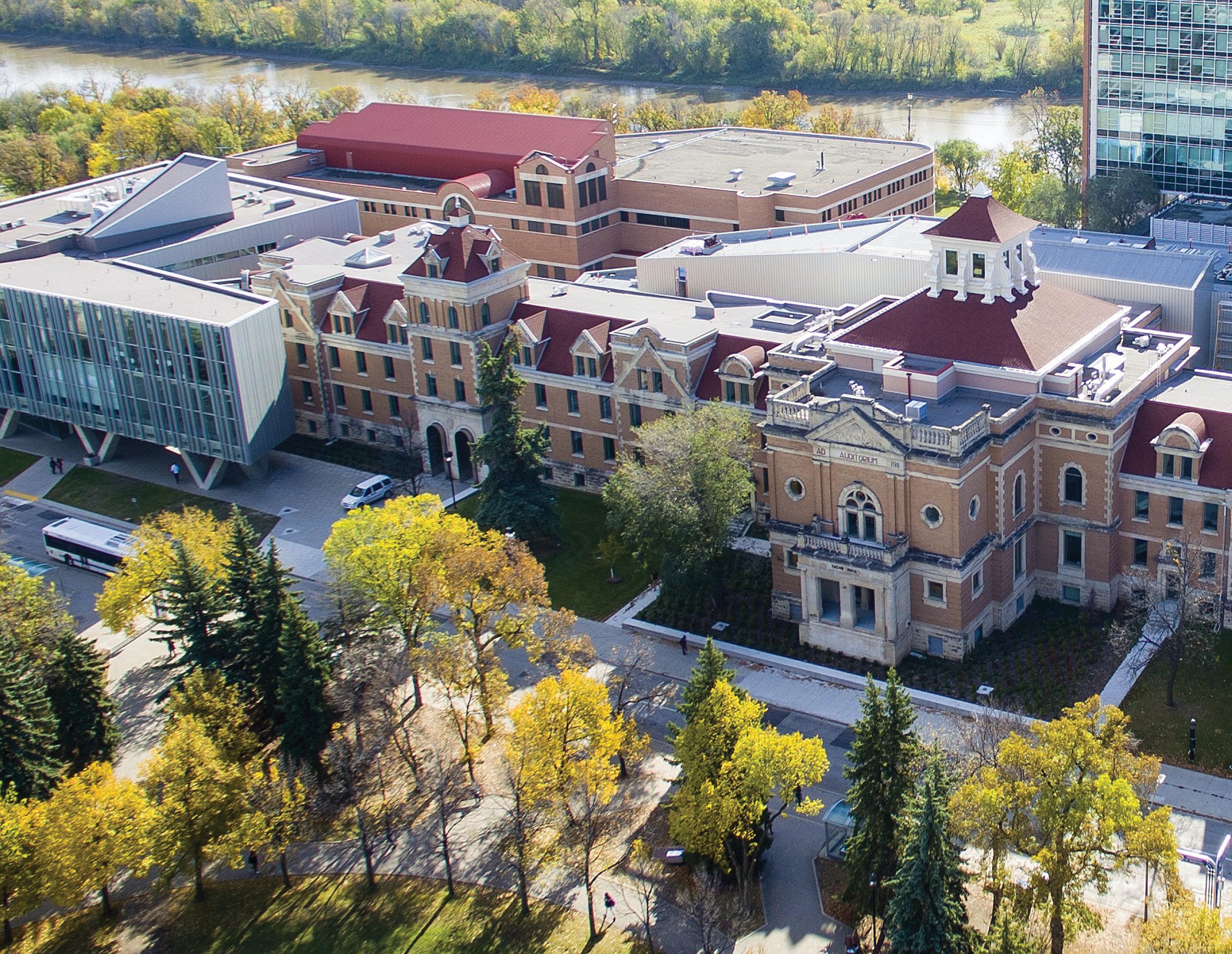
02
INFRASTRUCTURE RENEWAL PLANNING
The University of Manitoba must balance a multitude of competing deferred maintenance priorities with limited resources. As the University continues to grow and develop, the need to make sustainable, well-timed infrastructure investments is essential to mitigate potential impacts to our facilities. Presently, the portfolio has greater than 6,600,000SF of building assets and the average building age is 48.1 years old. The University buildings have a Facilities Condition Index (FCI) value of 0.10 which is on the border line of Fair to Poor for a condition rating. This represents an FCI requirements value of $356 Million over the Current Replacement Value (CRV) of $3,569 Million. The University’s FCI ranking is aligned with the average FCI ranking of other Canadian U15 institutions.
The Facility Condition Index (FCI) is an industry-standard index that measures the relative condition of a facility by considering the costs of deferred maintenance and repairs as well as the value of the facility. FCI allows condition benchmarking between facilities of unequal size and composition, both within and among institutions. The University utilizes asset management software (VFA Facility) as a tool to manage facility requirements, establish FCI ratings, and
informing the capital planning process. Total FCI (for Multiple Assets) is calculated as the sum of the Deferred Maintenance costs of selected assets divided by the sum of their Current Replacement Value. The FCI index has improved in recent years as a result of investment in renewal and renovation projects reducing a number of facility requirements, as well as the increase of the CRV with the addition of new buildings (Art Lab, Tache, Active Living Centre, Daycare Addition, Stanley Pauley Building) combined with the demolition of older deteriorating buildings (Old Basic Sciences, Music Annex, Art Annex, B-Lot Trailers).
Presently, there are active renewal plans in place, or are currently being developed for added investment in roadways, site lighting and water mains. As well, our recent electrical service and emergency power capacity issues have pushed these components to the forefront. Other major areas of focus in the near term will be riverbank stabilization, outfall assessment and upgrade needs, as well as future renewal and growth capacity of the Central Energy Plant. The below graph indicates % of constructed space on campus by year.
02
20% 18% 16% 14% 12% 10% 8% 6% 4% 2% 0% 1911 1915 1920 1925 1930 1935 1940 1945 1950 1955 1960 1965 1970 1975 1980 1985 1990 1995 2000 2005 2010 2015 2020 % OF CONSTRUCTED SPACES BUILDING AREA
YEAR 50% YEAR Architectural & Engineering Services [AES] | 04
BY
BANNATYNE AND FORT GARRY FACILITIES
OF MANITOBA
UNIVERSITY
1 2 3 4 5 6 7 8 9 10 11 12 13 14 15 16 17 18 19 20 21 22 23 24 25 26 27 28 29 30 31 32 33 34 35 36 37 38 39 40 41 42 43 44 45 46 47 48 49 50 51 52 53 54 55 56 57 58 59 60 61 62 63 64 65 66 67 68 69 70 71 72 73 74 75 76 77 78 79 80 81 82 83 84 85 86 87 88 89 90 91 92 93 94 95 96 97 98 99 100 101 102 103 104 105 106 107 108 109 110 111 112 113 114 115 116 117 118 119 120 121 122 123 124 125 126 127 128 129 130 131 132 133 134 135 ‐0.05 0.05 0.15 0.25 0.35 0.45 0.55 0.65 1905191019151920192519301935194019451950195519601965197019751980198519901995200020052010201520202025 ASSET -FCI UNIVERSITY OF MANITOBA BANNATYNE AND FORT GARRY FACILITIES Good Fair Poor Critical YEAR GOOD FAIR POOR CRITICAL 05 | Architectural & Engineering Services [AES]
GOOD (0.00 - 0.05)
1 AC Storage (Former AAFC Storage Facility)
2 Active Living Centre
3 Agricultural Engineering
4 Agriculture Building - East Block
6 ARTLab
8 Brodie Centre - No Common - 000 - 400
FAIR (0.06 - 0.10)
54 Administration Building
55 Agriculture Lecture Block
56 Architecture 2
57 Arthur Mauro Residence
58 Crop Technology Centre
59 Dairy Barn Art Studio
60 Dentistry 1 Building
61 EITC - E3
62 Frank Kennedy Centre
63 Honey House
64 Machray Hall
65 Max Bell Centre
66 Medical Rehabilitation
67 Physical Plant
68 Poultry Cage-Laying House
69 Sculpture/Ceramics
POOR (0.11 - 0.30)
CRITICAL (0.31 +)
82
83
133
134
5 Apotex Centre
7 Biological Sciences
9 Brodie/Buhler Centre - Common
12 Buller Building
C.A.S.T.
Campus Children's Centre Inc. 15 Campus Day Care Centre 16
Building
Dentistry
Building 18
10 Buhler Centre - No Common - 500 & 600 11 Buhler Centre - No Common - 700 & 800
13
14
Chown
17
3
Drake Centre 19 Duff Roblin 20 EITC - E1 21 EITC - E2
22 Elizabeth Dafoe Library 3 (1979)
Building
Flood
Kiosk 27 Fort Garry Parkade 28 Generator Building - East 29 Generator Building - North 30 Grain Storage Research Lab 31 Helen Glass Centre For Nursing 32 High Performance Computer Facility 33 Investors Group Athletic Centre 34 McQuade Structures Lab 35 Migizii Agamik 36 MIM - Manitoba Institute for Materials 37 Pembina Hall Residence 38 Physical Plant Storage Building #1 39 Plant Science - Equipment Storage / Pole Shed 40 Plant Science Pesticide & Fertilizer Storage 41 Richardson Centre (RCFFN) 42 SEA-ICE Environmental Research Facility (SERF)
St. John's College - Robert B. Schultz Theatre
Stanley Pauley Centre
Stanley Pauley Engineering Building 46 Storage Trailer (Carpentry Shop)
T K Cheung Centre 48 Tache Arts Complex - T2 49 Tache Hall 50 Tecumseh Street Parkade 51 University Stadium Accessible Washrooms 52 Welcome Centre 53 Winnipeg Soccer Complex
23 Elizabeth Dafoe Library Storage 24 Environmental Safety
25
Pump House 26 Fort Garry Bike Repair
43
44
45
47
Building
SIAF (Sustainability in Action Facility) - Straw Bale Building 71 Soil Science Equipment Shed 72 St. Paul's College - Chapel 73 St. Paul's College - Zone 4 74 Tier Building 75 Wallace Building
70
76 55 Chancellors Circle (Former Fitzgerald Bldg.)
Building
Allen Building
Animal Science
Animal Science Equipment Shed
Armes Lecture Theatre
77 Agriculture
78
79
80
81
Basic Medical Sciences (BMSB)
Central Energy Plant (Powerhouse)
Chancellor's Hall
Dentistry 2 Building
Education 1 (1962)
Education 2 (1965)
Education 3 (1969) 89 Energy Research Laboratory 90 Extended Education 91 Fletcher Argue Building 92 Human Ecology 1 93 Human Ecology 2 94 Human Ecology 3 95 Isbister Building 96 Joyce Fromson Pool 97 Max Bell Centre Link 98 Medical Services 99 Overwintering Building 100 Parker Building 101 Pathology Building 102 Pembina Hall 103 Plant Science 104 Plant Science Canola Processing and Storage 105 Plant Science Equipment Storage 106 Plant Science Field Station 107 Plant Science Seed Processing 108 Plant Science Vegetable Storage 109 Poultry Brooding and Growing 110 Poultry Service Building 111 Research Annex 112 Robson Hall 113 Russell Building 114 Sinnott Building 115 St. John's College - Chapel 116 St. John's College - Residence 117 St. John's College - Zone 2 118 St. Paul's College - Zone 1 and 2 119 St. Paul's College - Zone 3 120 Stores Building 121 UMSU University Centre 122 University College Lecture Hall 123 University College Residence 124 University Stadium
84
85
86
87
88
Music Building)
125 65 Dafoe - (Former
126 B Lot Trailers
Science Building
127 Dairy
Dafoe
(1951)
128 Elizabeth
Library 1
Dafoe Library
(1962)
129 Elizabeth
2
130 Ellis Building
131 Mary Speechly Hall
Education Equipment Storage
132 Physical
Physical Plant Trailer
B
Science Greenhouse
St. John's College - Zone 1 Architectural & Engineering Services [AES] | 06
135
FACILTIES CONDITION INDEX (FCI)
Facilities Condition Index (FCI) is used as a key performance indicator as part of a strategic assessment process. When assessing the relative condition of university facilities, the age profi le of our campus indicates a wave of foreseeable increased maintenance costs. Major building components are typically known to reach the end of their useful life after 25 years, while high risk reliability issues become apparent after 50 years.
Asset record data indicates that more than 50% of university campus buildings constructed in the last century were built between 1956 and 1972 (refer to the Building Area By Year chart). This large group of buildings was built during an era when construction quality was lower and building regulations were less stringent than
they are today. The lower-quality construction causes a need for renewal earlier on in the building’s life cycle and a majority of systems are now at or near the end of their service life.
Decaying building systems include windows, roofs, interior fi nishes, plumbing, electrical, and HVAC equipment. While preventative maintenance has greatly extended the life of these systems, they are in need of extensive renewal to restore them up to an acceptable condition equivalent to the originally intended capacity or to meet the requirements of current codes & regulations.
GOOD 0.00 - 0.05 FAIR 0.06 - 0.10 POOR 0.11 - 0.30 CRITICAL 0.31 + Facility Condition Index (FCI) = Total cost of existing deficiencies Current replacement value
07 | Architectural & Engineering Services [AES]
INFRASTRUCTURE RENEWAL AND MAINTENANCE PLANNING COMMITTEE (IRMPC)
The Infrastructure Renewal and Planning Committee (IRMPC) plays a key role in assessing infrastructure needs across all campuses. The committee serves as stewards of the real property portfolio of all University of Manitoba campuses and research facilities. The committee will align repair and replacement planning with that of the overarching strategic plan of the University, in context of other capital projects and the Campus Master Plan(s).
1. Prioritizes capital renewal initiatives and actively strives to reduce the impact of Deferred Maintenance (DM) and repairs on the campus community.
2. Develops and manages the Multi-Year Infrastructure Renewal Plan.
3. Eff ectively manages the Infrastructure Renewal and Maintenance Planning Committee (IRMPC) budget, with an emphasis on long-term sustainability.
4. Coordinates repair and replacement work with university-wide capital investments for alignment with institutional goals.
5. Supports the ongoing management of the Facility Condition Index (FCI).
The committee is supported by the Facility Assessment Coordinator, Architectural & Engineering Services, who consults with Project Managers and Operations & Maintenance Trade Shop Managers regularly.
Several of the University’s existing buildings and infrastructure are nearing the end of their life span. In many cases, structures have undergone numerous renovations and upgrades throughout their history. As a result of recent Building Condition Assessments, it is evident that basic repairs to extend the life of specifi c buildings would incur costs that are well beyond annual maintenance budgets.
The graph below indicates the estimated funding requirements to maintain an FCI of 0.10 (fair condition) over a 14-year planning horizon.
FUNDING TO MAINTAIN CURRENT CONDITION
FCI (0.10) 200 180 160 140 120 100 80 60 40 20 0 0.12 0.1 0.08 0.06 0.04 0.02 0 22/23 ($318) 23/24 ($341) 24/25 ($500) 25/26 ($582) 26/27 ($664) 27/28 ($822) 28/29 ($904) 29/30 ($992) 30/31 ($1052) 31/32 ($1132) 32/33 ($1305) 33/34 ($1362) 34/35 ($1443) 35/36 ($1540) FUNDING IN MILLIONS $ YEAR $15 M AVG SPEND BACKLOG IN MILLIONS $ FACILITY CONDITION INDEX $39.3 $38.0 $173.7 $173.4 $74.9 $95.2 $72.4 $95.7 $187.8 $97.1 $96.9 $96.9 $102.4 $112.0 Architectural & Engineering Services [AES] | 08
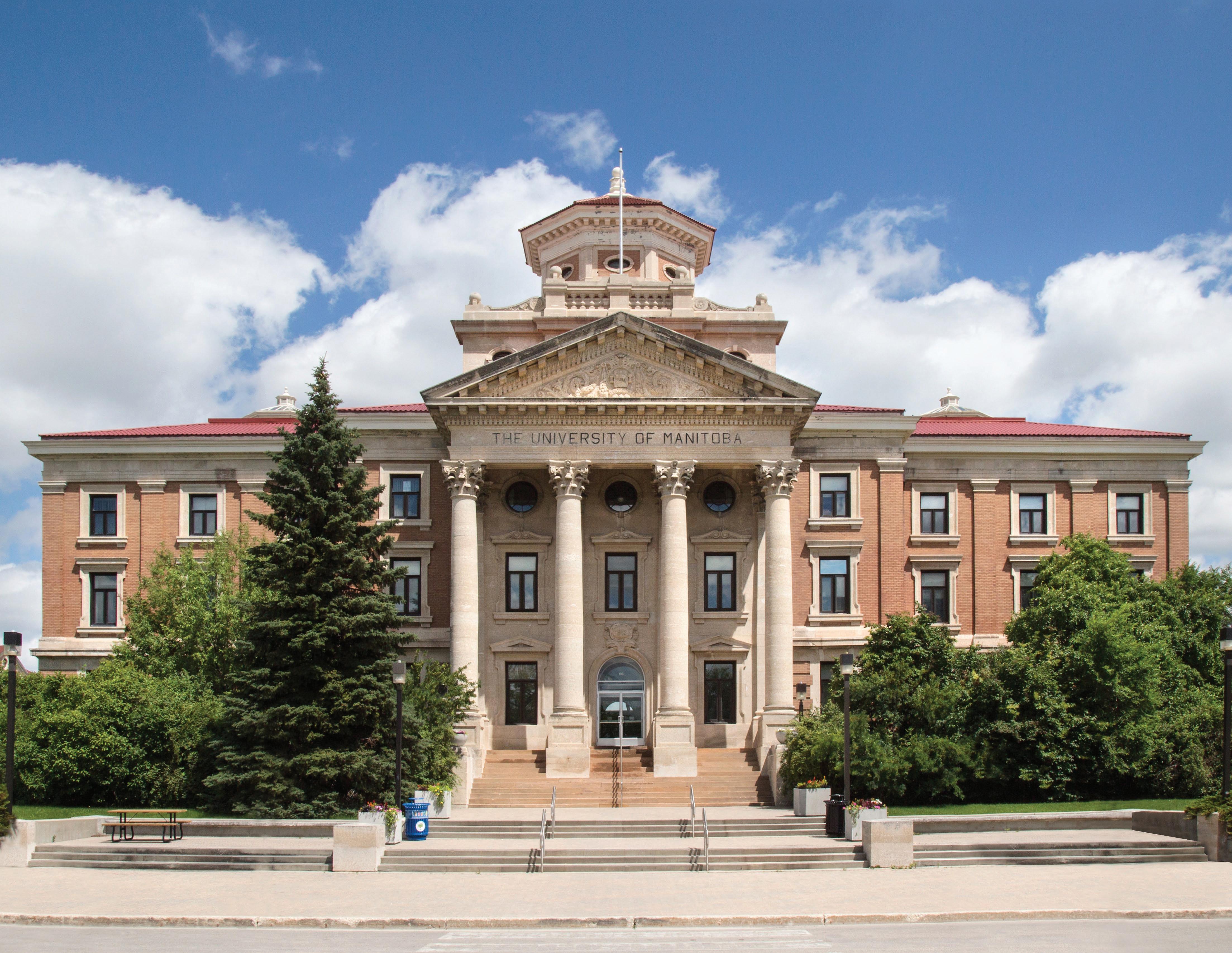
2021-2022 MAJOR INFRASTRUCTURE RENEWAL PROJECTS
31 ACTIVE PROJECTS
Estimated Total Project Costs Haz Mat 6% Life Safety 10% Civil/Landscape 10% Arch/Struct Systems 13% Accessibility 13% Building Envelope 22% Mechanical Systems 26% (1) UMSU University Centre 303C19061204.2 Level 100 East Washroom Reno Majority of project cost covered under the fi re remediation project (UM insurance). (2) St. Paul's College 145C17103001 ReRoofi ng Zone - A/C Unit in 2021, roofi ng deferred to 2022. # Category Location Description Project Cost Summary Final Spend 1 Life Safety Education Sprinklering and Fire Alarm upgrade $1,093,332.35 2 Building Envelope Plant Science New Exterior Windows $734,554.45 $713,157.36 3 Civil/Landscape Fort Garry - Landscape Culvert No. 108 $1,302,491.09 $1,260,021.91 4 Life Safety Allen Sprinkler system, mixing box, AHU Upgrades $2,950,559.80 5 Arch/Struct Systems 55 Chancellors Circle PH I - Annex Demolition $336,282.79 $320,411.79 6 Building Envelope Ellis Window Replacement $1,798,786.18 $1,612,089.54 7 Building Envelope Administration Masonry Repairs and Landscaping $3,027,956.37 $2,751,087.00 8 Building Envelope "Richardson Centre for Functional Foods and Nutraceuticals" Investigate Building Envelope $263,346.34 $248,015.25 9 Life Safety Central Energy Plant Life Safety Upgrade $2,890,533.57 10 Building Envelope Agriculture Lecture Block Exterior Entrance Improvements $104,803.36 $93,597.49 11 Arch/Struct Systems Fort Garry - Landscape Allen Bldg - North Stairs Phase II $256,113.67 $251,467.38 12 Haz Mat Armes Lecture Building "ACM removal/new ceiling, lights & services (Added to Armes LSR Upgrades)" $279,586.49 $263,374.01 13 Haz Mat Isbister Remove Textured ACM Ceiling/Install New Ceiling $239,215.79 $297,498.00 14 Arch/Struct Systems Russell "PH II - Exterior Podiums - South (Added to Russell North Podiums)" $422,904.00 $439,259.50 15 Arch/Struct Systems Duff Roblin Repair/Replace Existing Stairs and Railings $130,167.32 $152,263.30 16 Mechanical Systems Parker Refurbish/Replace Steam System $2,288,550.52 $2,204,440.64 17 Mechanical Systems UMSU University Centre Replace Galvanized Piping [Mains/Risers] (Includes Sanitary Mains) $621,595.36 $498,841.46 18 Mechanical Systems UMSU University Centre "Sanitary Mains Replacement (Added to Galvanized Piping)" $0.00 19 Accessibility UMSU University Centre Level 100 East Washroom Reno (1) $336,099.56 $320,500.27 20 Civil/Landscape Fort Garry - Roadways Year 4 (Includes Year 5 Road Renewal) $5,281,523.31 21 Civil/Landscape Fort Garry - Roadways Year 5 (Added to Year 4 Road Renewal) $0.00 22 Building Envelope William Norrie Center Envelope Repairs $278,289.84 $237,159.11 23 Mechanical Systems Administration L200 North - HVAC/System Upgrades $1,092,496.14 $1,236,463.01 24 Accessibility Parker Refurbishment of Building Elevator $327,385.40 $280,236.06 25 Mechanical Systems Bannatyne Campus Upgrade Delta System (3) year plan $1,000,000.00 $857,099.90 26 Accessibility Pathology Refurbishment of Building Elevator $232,199.87 $270,656.68 27 Mechanical Systems St. John's College Replace Condensate Tank $251,678.24 $230,653.10 28 Mechanical Systems Medical Rehab Upgrade Domestic Tank/Water Heaters $208,490.86 $175,996.97 29 Mechanical Systems Brodie Centre Replacement of Booster Pumps $124,463.66 $122,865.92 30 Accessibility UMSU University Centre Washroom Renovations $408,155.79 $400,324.31 31 Building Envelope St. Paul's College Roof Replacement - Zone 1 (2) $289,769.13 Architectural & Engineering Services [AES] | 10
$28,571,331.25
MAJOR INFRASTRUCTURE RENEWAL PLAN
2022
YEAR 1 - $13,503,516
Elizabeth Dafoe - Library Washroom Renovation
Frank Kennedy - Elevator Modernization
Basic Medical Sciences - New Elevators - Service 1 & 2
Administration - L300 400 HVAC
EITC-E2 Atrium - LED Lighting Upgrade
Fort Garry - Water Main Upgrade [Program]
Duff Roblin - RM 203 - Men's Washroom Renovation
Physical Plant - Remove / Replace Existing Fueling Station
St. John's College - Exterior Walkway - PH1 Report Only
Frank Kennedy - West Loading Dock Stair
St. Paul's College - Roof Replacement - Zone 1
UMSU University Centre - NE Exterior Stair Replacement
UMSU University Centre - East Exterior Stair from Plaza to Patio
Pathology - Sewer / Storm Drain Repair / Replacement
2023
YEAR 2 - $17,289,554
Basic Medical Sciences - Washroom Renovation [part of BMSB Theatre Project]
B Lot Trailers - Disconnect/Removal of Trailers - Refurbish Lot
St. Paul's College - Roof Replacement - Zone 2
Isbister - Front Entrance Repair Roof Overhang
Sculpture/Ceramics - Mechanical Upgrade (Kilns)
Education - Repair/Replace South West Exterior Stairs
Education - Sprinklering and Fire Alarm upgrade Phase 4A
UMSU University Centre - North Tunnel Ceiling Beam
Investors Group Athletic - Aluminum Piping Replacement
Wallace - Lvls 2-4 Carpet Replacement
Steam Cond Replace - Co existing UG condensate Line/Steam Pit
University College Residence - PH II Curtain Wall Replacement - Great Hall
Armes Lecture Building - Phase I Armes Link Roof Repair Work
Education - Exterior South Entrance Podium Repairs
YEAR 3 - $19,898,369
Basic Medical Sciences - HVAC Upgrade Theatre A,B,C [part of Renovatiion Project]
Architecture II - Canopy, Doors and Operators
Fletcher Argue - L200 Washroom Renovations
Isbister - Mechanical Room Cooling Coil
Eliz.abeth Dafoe Library - PSC Entranceway - Repairs / Re-Construction
65 Dafoe Road - Upgrade Building Envelope
University College Residence - PH II Curtain Wall Replacement - Great Hall
Fletcher Argue - West Stair and Courtyard Redevelopment
Machray - Washroom Renovation
Duff Roblin - Investigate Roof Deck Over Tunnel
Frank Kennedy - Lighting / Ceiling Replacement
Machray - PreCast Panel Envelope Repairs
Education - Sprinklering and Fire Alarm Upgrade Phase 4B
UMSU University Centre - Replace L300 Main Corridor Ceilings
Dentistry - Ext Sun Canopy E / S Sides of Bldg & Fascia Replace
Dentistry - Ext Sun Canopy E / S Sides of Bldg & Fascia Replace
Duff Roblin - Carbon Bed Filter Replacement - Tanks "A" and "B"
Fletcher Argue - Washroom Renovations
Frank Kennedy - Eastside Link Roof
Wallace - Partial Roof Replacement
Duff Roblin - Tunnel Renewal Upgrades
FG Campus - General Building Condition Assessments for Campus Bldgs
Tier - Slate Roof Remedial Work (Fence)
Investors Group Athletic - Roof Replacement - Phase 1
St. Paul's College - New Elevator (design only)
Frank Kennedy - Gym Lighting Upgrades
Education - Replace Galvanized Water Piping
Allen - North Exterior Stair / Podium Drainage
Fort Garry Landscape - 264B Freedman / Outfalls 3 & 8 Riverbank Stabilization
137 Innovation Drive - Elevator Addition (design only)
137 Innovation Drive - Elevator Addition
Ellis - East / West Link Entrance Ramp and Landing
Buller - Female Washroom Renovations
Machray - Main Entrance Doors
Machray - Stairwell Redevelopment
Machray - L100 Corridor Ceilings / Lighting
St. Paul's College - Create New Accessible Washroom
Machray - HVAC Upgrade - Machray Hall
Armes Lecture Building - Phase II Armes Link Repairs / Window Replacements
Investors Group Athletic - Exterior EIFS Wall Repairs
Brodie Centre - Ceiling Repairs Due to Sprinkler Failure
Wallace - Exterior Stairs & Loading Dock
Machray - Investigate Washroom & Service Wall Repairs
St. Paul's College - New Elevator
Elizabeth Dafoe Library - South Entrance Doors Replacement
UMSU University Centre - Replace Distribution Panels
Investors Group Athletic - Phase II Roof Replacement
Education - Replace Transformer in Education 2 Bldg
Max Bell - Door Upgrades Including Auto-Dr Operators / Flooring
2024
11 | Architectural & Engineering Services [AES]
YEAR 4 - $18,649,519
Sculpture / Ceramics - Upgrade / Provide HVAC Systems for Entire Building
Isbister - Steam System Replacement
Architecture II - Podium, Ramp and Landscaping
Dentistry - Washroom Renovation
EITC-E1 - Exterior Window Sills
Sinnott - Upgrade / Provide HVAC systems for entire building
Education - Sprinklering and Fire Alarm Upgrade Phase 4C
Stores Building - Replacement of Existing Stores Building
Frank Kennedy - Wall Repairs - Combative Room & Raquetball Courts
UMSU University Centre - Sprinkler System Upgrade
Robson Hall - Building ACM Removal Plan
Ellis - New Exterior Pole Mounted Lights
Basic Medical Sciences - Corridor Ceiling and Lighting Upgrade
Duff Roblin PH II - Repair/Replace Existing Stairs and Railings
Education - Repair/Replace AHU-2
Medical Services - Replace RO System serving Bannatyne Campus
Brodie Centre - East Curtain Wall
Ellis - RO System Replacement
UMSU University Centre - Replacement of AHU-4
EITC-E2 - Exterior Sliding Doors [SW and NE Sides]
2026
YEAR 5 - $14,314,100
Elizabeth Dafoe Library 1 - Replace Terrace Slab, Waterproofi ng, and Guards
Architecture II - Replace 15 Ton Liebert Unit Serving Computer Area + 1/2 Basement
Isbister - Replace Cooling Coils - AH1 Penthouse
Elizabeth Dafoe Library 1 - Asbestos Abatement - 200 Level - Textured Plaster Ceiling & Asbestos Elbows
Elizabeth Dafoe Library 1 - Replace Wood and Aluminum Windows, South Elevation (East Portion, 3 Levels)
Elizabeth Dafoe Library 1 - Replace AHU-Liebert RM114
Elizabeth Dafoe Library 2 - Replace Stucco
Elizabeth Dafoe Library 2 - Replace Wood Siding and Punched Windows - Placeholder
UMSU University Centre - Sprinkler Remainder of the Building
Dairy Science - Washroom Renovations Second Floor
Animal Science Entomology Main Building - Parapet / Canopy Roof Covering Replacement
Isbister - Replace Roof A1
55 Chancellors Circle (Former Fitzgerald) - Replace Shingle Roof D1
Human Ecology 2 - Restoration, Re-pointing and Caulking
Agriculture - Replace SBS Roof D & Add Drain
Agriculture - Replace SBS Roof D & Add Drain
Education 1 - Restoration, Re-pointing and Caulking
Education 1 - Restoration, Re-pointing and Caulking
EITC - E3 - Restoration, Re-pointing and Caulking
EITC - E3 - Restoration, Re-pointing and Caulking
UMSU University Centre - Replace 4-Ply BUR - Roof B2 over HUB Social Club & Associated Areas
Fletcher Argue - Seal Parapet Flashing Around Roof Perimeter
St. John's College - Zone 1 Replace Wood Exterior Windows
Human Ecology 1 (1914) - Foundation Waterproofi ng
Animal Science Entomology Building - Depressurization Investigation
William Norrie Centre - Replace Cooling Tower
Medical Services - Upgrade Fire Alarm Panel and Devices
Dairy Science - Provide New Electrical Service and Distribution
Brodie / Buhler Centre - Common Replace Brodie Buhler Air Compressor
65 Dafoe - Upgrade Steam System
Tier - Replace Steam Supply System
65 Dafoe - Refurbish Main AHU and Associated Equipment & Add HRV RTU
Buller - Biological Upgrade 5KV Switchgear Line-Up
Duff Roblin - Replace DX Coils for Basement Air Handlers
Duff Roblin - Replace DX Coils for Basement Air Handlers
Brodie / Buhler Centre - Common Replace Emergency Generator
Brodie / Buhler Centre - Common Replace Emergency Generator
Pembina Hall - Replace Multizone and MAU
Pembina Hall - Replace Multizone and MAU
2025
Architectural & Engineering Services [AES] | 12
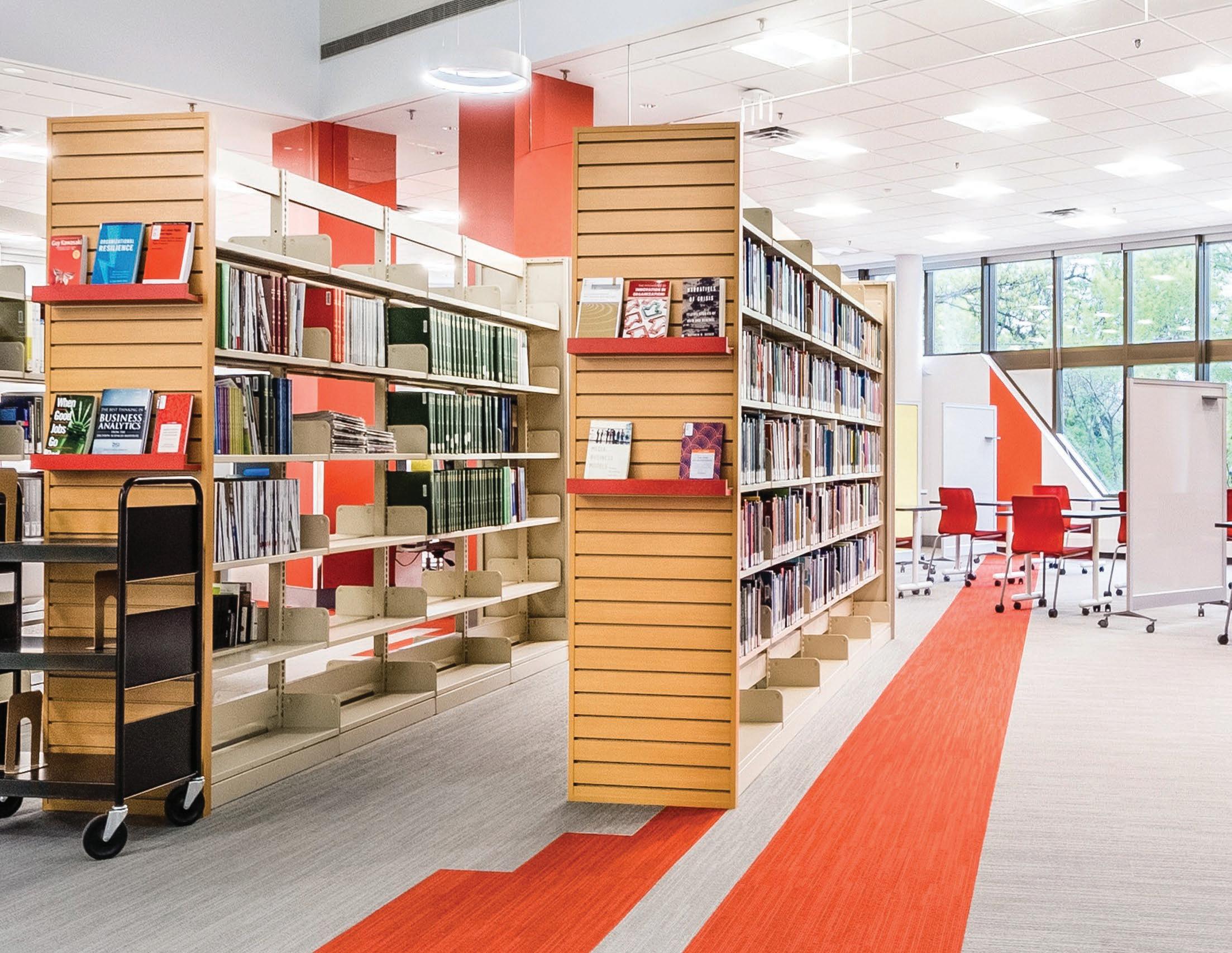
03
AES is responsible for the planning development, renewal and renovation of campus facilities. We provide stewardship for all institutional facilities at all campus locations.
AES works closely with UM stakeholders to manage all aspects of capital project delivery including planning, procurement, design, construction and commissioning.
In total, AES has completed over 241 projects in 2020/2021 with a collective capital expenditure of approximately $94.4 million dollars.
CONSTRUCTION 140 $73,323,701
389 ACTIVE PROJECTS
$299,394,788
Estimated Total Project Costs
ESTIMATE 100 $24,512,033
TENDER APPROVAL 15 $560,101 TENDER 20 $6,789,585
RFP/RFQ 15 $7,340,489
DESIGN REVIEW 14 $11,952,204
DESIGN 33 $3,495,600
03 PROJECTS
DESIGN-EXTERNAL 42 $171,421,075 Architectural & Engineering Services [AES] | 14
REDEVELOPMENT
Machray Hall
Completion Date:
September 2026
Consultants:
Number TEN Architectural Group

Crosier Kilgour & Partners
Epp Siepman
General Contractor: –
Size: 79,179 sq. ft.
Project Cost: $23,100,000
Sustainability Target: N/A
The Machray Hall renovation project will integrate research and learning environments for the Faculty of Science, graduate students, and honors thesis students, by combining the specialized information and Geographic Information Systems (GIS) resources of the library with Science Faculty expertise. The renovation will provide improved space for researchers to work and improved meeting rooms in which contacts with industrial collaborators and community can be made and maintained.
The newly renovated space will house existing and new program elements including but not limited to; offi ces for the Department of Mathematics, Statistics, Offi ces for Research Services, a Library reading atrium on each level, general collections, Library staff work spaces, a technology commons, Study Rooms, Faculty of Science classrooms and labs, a building wide staff lounge, media based exhibition space, and general social and collaborative spaces throughout the transformed building.
15 | Architectural & Engineering Services [AES]

ELECTRICAL RE-SERVICING
Fort Garry Campus
Completion Date:
2035
Consultants:
MCW Engineering
Bockstael Construction Limited.
General Contractor:
Bockstael Construction Limited.
Size: N/A
Project Cost: $82,000,000
Sustainability Target: N/A
The University’s existing electrical distribution was constructed in 1960 and is at the end of its serviceable life. This represents a signifi cant risk due to frequent power disruptions impacting campus operations. Notably, over the past seven years, there have been more than 30 signifi cant disruptions, most of them resulting directly from end-of-life infrastructure. The frequency and magnitude of these disruptions across the campus are increasing, often aff ecting multiple buildings at a time. Further, the existing electrical distribution on the north side of the campus has exceeded its capacity, limiting any future development.
Currently, Manitoba Hydro delivers power to the Fort Garry Campus from University Station (at the corner of University Crescent and Freedman Crescent). This Station is also known as the current Point of Delivery (POD) for delivering electricity to the campus. Hydro owns, maintains, and operates the electrical equipment arriving into University Station, while the UM owns, maintains and operates the equipment leaving University Station. This project will see Manitoba Hydro install new underground power cables around the campus perimeter to deliver 24 kV power to the four new POD locations.
The University will be responsible for transforming and distributing this power to each of its facilities. The new PODs are completely safe and are designed to be located in public areas. Most new neighborhoods are serviced by similar PODs situated in public places. All equipment meets or exceeds current Canadian Standards Association (CSA) requirements for safety in public places and for safe operation, and will require less interaction with University staff. Any digging required to install the PODs will be done by using a horizontal boring technique so there will be very little disruption. The majority of the excavation work will be performed during the summer months with less population on campus.
This project will signifi cantly advance our Climate Action Plan priorities by providing access to the power required for the three new electric boilers being installed in the Central Energy Plant. These boilers will reduce the University’s Green House Gas (GHG) Emissions by 16k tonnes annually, a 50% reduction in UM heating related GHG emissions by 2030.
17 | Architectural & Engineering Services [AES]
Wallace Building power outage
Replace feeder on U5 from SB8A
Fort Garry Campus – Power Outages
St Andrews College motor vehicle accident
U2 pole phase loss
U5 underground fault (7 months)
U5 Line fault with U10 impact
St Andrews College power outage
Bank 1 failure (6+ months)
U9 Plant Science Field Station failure (1 month)
University Centre transformer Failure
Bank 1 Failure due to relay
Helen Glass Building power outage IGAC Building power outage Bank 1 Boxing Day Failure (5 months)
Ellis Transformer Failure (1 building, 23 hrs)
U8 failure – phase lost (4 months, 8 Buildings, 6 hrs)
Power bump to campus x 2 (Smartpark, 2+ Buildings, 30 min)
Power bump to campus (Bank 1, 30+ Buildings, 30 min)
Power outage X95, 100 servers (Bank 1, 30+ Buildings, 30 min)
Transformer failure at Elizabeth Dafoe/B Lot (8 months, 2 Buildings, 10 hrs)
U2 power outage (3 months)
Campus Wide power outage
U8 overcurrent, tied to U2 (4 months)
MB Hydro power surge on Bank 3
Mohawk Station outage to bank 1 of 3 (2 months)
Power bumps (6+ occurrences)
Campus wide power outage (20 min, FG Campus, 8 hrs)
Campus wide power bump (20 min, FG Campus, 2 hrs)
55 Chancellor's Circle outage (24 hrs, 1 bldg, 4 weeks)
Campus wide power outage (20 min, FG Campus, 4 hrs)
Schultz Theatre outage (72 hrs, 1 bldg, 3 days)
Bank 1 power outage (12 hrs, 20 bldgs, 2-3 months)
U Lot lighting outage (4+ days, 1 area, in progress
U5 failure
Hydro damage to U9 (4 hrs, 19 bldgs)
U1/U9 scheduled maintenance (3 hrs, 19 bldgs)
U11 Section Failure (6 hrs, 2 bldgs)
U11 Section Failure (2 hrs, 2 bldgs)
U1/U2/U3/U4/U5 (30 sec, 20+ bldgs)
U13 repairs (6
Tache West power outage (4+days, 1 bldg in progress)
Replace feeder on U5 from SB8A
Replace feeder on U2 from SB6
Transfer to alternate bank (30 bldgs 16 hrs)
Adjustment (17 bldgs 2 hrs)
Installed temp transformer (36 hrs)
Isolated B lot failure (8 bldgs 4 hrs)
FORT GARRY CAMPUS – POWER OUTAGES ISSUE RESOLUTION
Updated: July 13, 2023
UPDATED: JULY 13, 2023
Animal contact with lines from Mohawk Station MB Hydro restored power (30 bldgs, 2 hrs)
Restored Power (5 hrs) Failed U11 breaker (4 days)
Fault on U8 (30 bldgs, 10-15 hrs)
Transformer replaced twice
MB Hydro aware MB Hydro aware
MB Hydro aware
Contractor damaged line with piling
Transformer failed, to be replaced
Fallen Tree Removed by Hydro
Tie U5/U10, MH repaired bank (30 bldgs, 12 hrs)
Bank 2 current transformer fault (3 bldgs, 4 hrs)
U10 restored (8 bldgs, 10 hrs) U5 impacted (8 bldgs, 36 hrs)
U5 abandoned, replaced in Dec 2018 (8 bldgs, 5 hrs)
Lost U2 and U5 (30 bldgs, 5 hrs)
MB Hydro replaced transformer (3 bldgs, 10 hrs)
MB Hydro issue at Mohawk Station
U5 impacted, Replaced A lot line (13 bldgs, 10 hrs)
Transferred to U10, U8 not repaired yet
Transformer replaced
Isbister transformer issue, Bank 1 issue
Cable repaired in transformer
MB Hydro aware
Cable repaired/replaced
MB Hydro aware
MB Hydro aware
Damage repaired
Hydro repairs at Mohawk Station
Replacement of portion of U11
Replacement of portion of U11
Hydro completed feeder repair
Generated mobilized to St Johns
2014 2015 2016 2017 2018 2019 2020 2021 2022 2023
hrs, Arthur Mauro) U2 Fault - frost heaving (3 hrs, 5 blgs) U1, U9 tripped (2 hrs, 15 bldgs) Scheduled service to repair damaged line U8/U9/U10/U11/U12 (1.5 hrs, 35 bldgs) Hydro configuration caused outage Hydro repair at splice point Hydro Mohawk issue U1/U9 (4 hrs, 20+ bldgs) Hydro initiated emergency reconfiguration U3/U11/U13 (2 hrs, 14 bldgs) U6 Central Energy Plant (40 hrs) St Andrews Daycare UM Pole Mounted Fuses replaced U1 (Drake Centre) UM Damage to U9 at feeder exit of station
ISSUE RESOLUTION
Architectural & Engineering Services [AES] | 18
INNOVATION HUB
Smartpark
Completion Date: April 2019
Consultants: Cibinel Architecture
General Contractor: BIRD Construction
Size: 75,067 sq. ft.
Project Cost: $42,500,000
Sustainability Target: LEED Silver

The core design principles of Smartpark Innovation Hub is centered on gathering and commercialization spaces. The Innovation Hub has an atrium, multi-purpose rooms, shared meeting rooms, and a food service to gather the community of innovators at Smartpark, the research community on campus, and researchers in the City and across the Province. Gathering spaces are essential for collision opportunities of diverse people and ideas toward innovation.
Organizations that fi t the eligibility criteria of the research and technology park will qualify as a potential tenant having the opportunity to lease Class A offi ce and commercialization spaces.
19 | Architectural & Engineering Services [AES]

STANLEY PAULEY
Engineering Building
Completion Date:
November 2018
Consultants: Stantec Architecture
General Contractor: BIRD Construction
Size: 46,015.71 sq. ft.
Project Cost: $27,978,259
Sustainability Target: LEED Silver

The Stanley Pauley Engineering Building at the University of Manitoba provides new space for engineering programs and associated research activities. It can accommodate increased student enrollment up to 25%.
The new 46,000 sq. ft. building off ers centralized, open-concept laboratories that can be shared by a variety of groups within the faculty and encourages collaboration, exploit existing research synergies, and provides new common workplaces.
The additional space also allows for expanded prototype development, construction, and exhibition, with a goal to raise awareness and participation of engineering innovation and continued industry engagement.
21 | Architectural & Engineering Services [AES]

DESAUTELS CONCERT HALL
TACHE ARTS COMPLEX
Completion Date: September 2023
Consultants: Cibinel Architects
General Contractor: Parkwest Projects Ltd.
Size: 19,590 sq. ft.
Project Cost: $23,855,040
Sustainability Target: Addition – LEED Silver
The Desautels Concert Hall will be a state-of-the art, intimate performance venue in the heart of the Fort Garry campus. It has been designed for a broad range of university and community events.
The Desautels Concert Hall will be a two-tiered, 407-seat venue, confi gurable in three ways:

• A large stage for orchestral groups.
• A small stage for jazz ensembles, chamber groups and voice recitals.
• A proscenium for theatre and dance performances.
Other technical features include catwalks over the stage to allow for rigging scenery or adding lighting and draperies and a technical booth at the back of hall.
23 | Architectural & Engineering Services [AES]
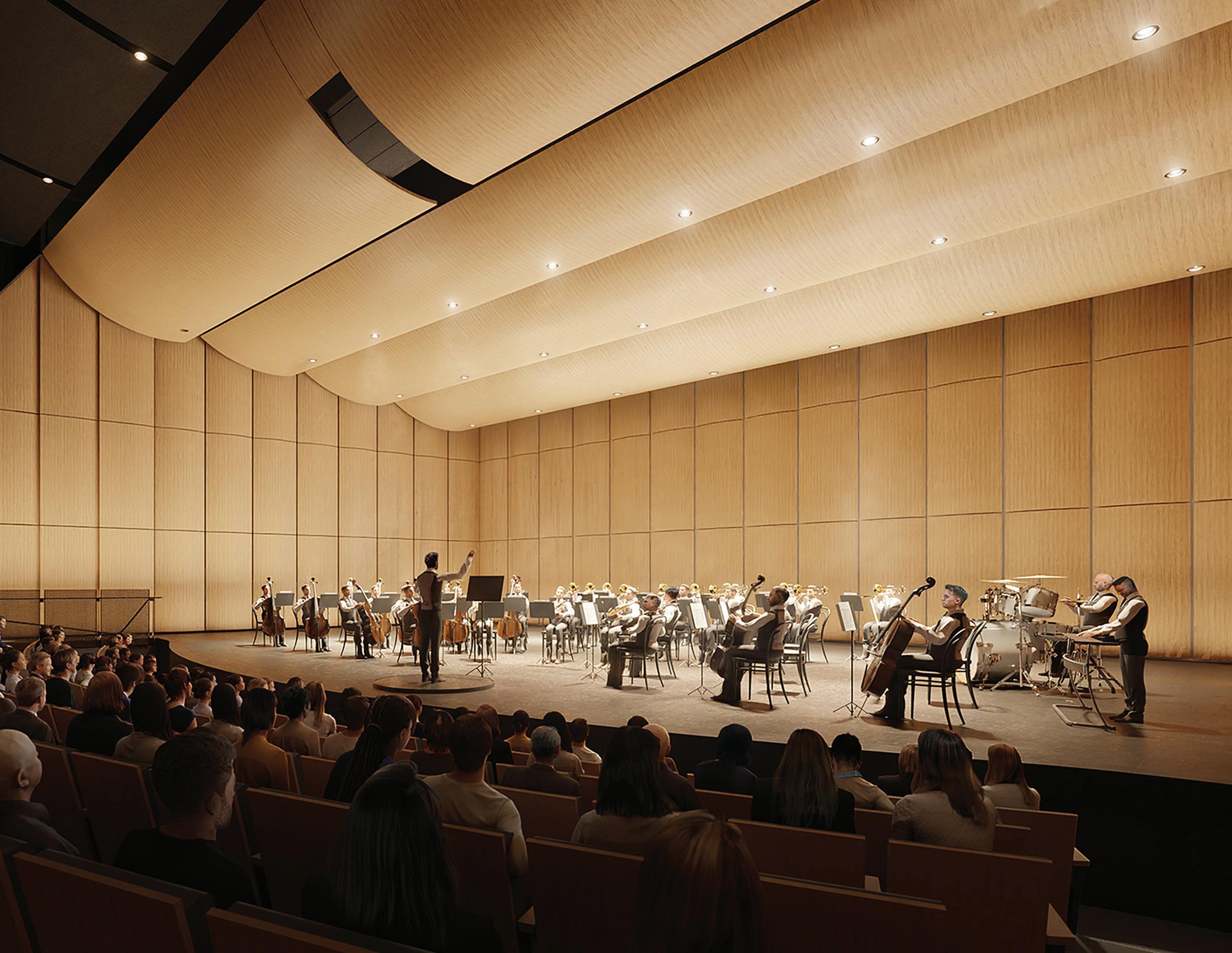
LEARNING SPACE
Renovations
The University has made signifi cant strategic investments in the renewal of classrooms and laboratory spaces.
Between 2014 and 2021, 181 classrooms and labs were renovated. The majority of classrooms in use today were built for traditional, “stand-and-deliver, sit-and-listen” pedagogies.
With teaching methods evolving and with the current generation of students having a more fl uid and unique approach to learning, the standard classroom is changing.
The University of Manitoba has responded to this change by developing an Active Learning Classroom Prototype within the Education Building; fl exible, dynamic, engaging spaces, where the focus is on group work and where students can see and engage with technology, instructors and other students at a moment’s notice.
The development of this prototype will allow instructors to test out their classes through combined projects/trials partnering with The Centre for the Advancement of Teaching and Learning.
181 TOTAL LEARNING SPACE PROJECTS 2014 29 2021 9 2020 12 2019 2 2015 47 2016 34 2017 26 2018 22 25 | Architectural & Engineering Services [AES]

2014-2023 $6 $5 $4 $3 $2 $1 $0 FUNDING IN MILLIONS $ Agriculture Ag Eng Allen Animal Science Arch II Armes BMSB Buller Dafoe Drake Duff Roblin Education Extended Ed EITC 1 EITC 2 Fletcher Argue Helen Glass Isbister Med Rehab Parker Russell St. Paul's & St. John's Tache Tier UMSU U Centre Wallace Furniture, minor upgrades $0.25 $0.24 $0.36 $0.66 $1.33 $2.00 $1.72 $0.22 $1.64 $2.06 $0.99 $1.43 $0.64 $2.22 $1.24 $0.35 $1.38 $0.44 $1.00 $0.35 $0.29 $0.10 $0.41 $0.37 $4.95 $0.12 $3.99 27 | Architectural & Engineering Services [AES]
LEARNING SPACE RENEWAL SPEND BY BUILDING
Bannatyne $3,372,785 11%
LEARNING SPACE RENEWAL SPEND BY CAMPUS
2014-2023
Fort Garry $27,389,422 89%
BUILDING COST
Agriculture $247,231
Ag Eng $239,293
Allen $362,464
Animal Science $660,690
Arch II $1,332,375
Armes $3,986,091
BMSB $1,996,153
Buller $1,715,143
Dafoe $220,225
Drake $1,641,968
Duff Roblin $118,540
Education $2,064,745
Extended Ed $994,550
EITC 1 $1,433,914
EITC 2 $641,388
Fletcher Argue $2,221,791
Helen Glass $1,241,919
Isbister $352,189
Med Rehab $1,376,632
Parker $4,954,434
Russell $438,717
St. Paul's & St. John's $1,002,260
Tache $349,600
Tier $289,417
UMSU U Centre $100,500
Wallace $409,850
Furniture, minor upgrades $370,128
Total: $30,762,207
Architectural & Engineering Services [AES] | 28
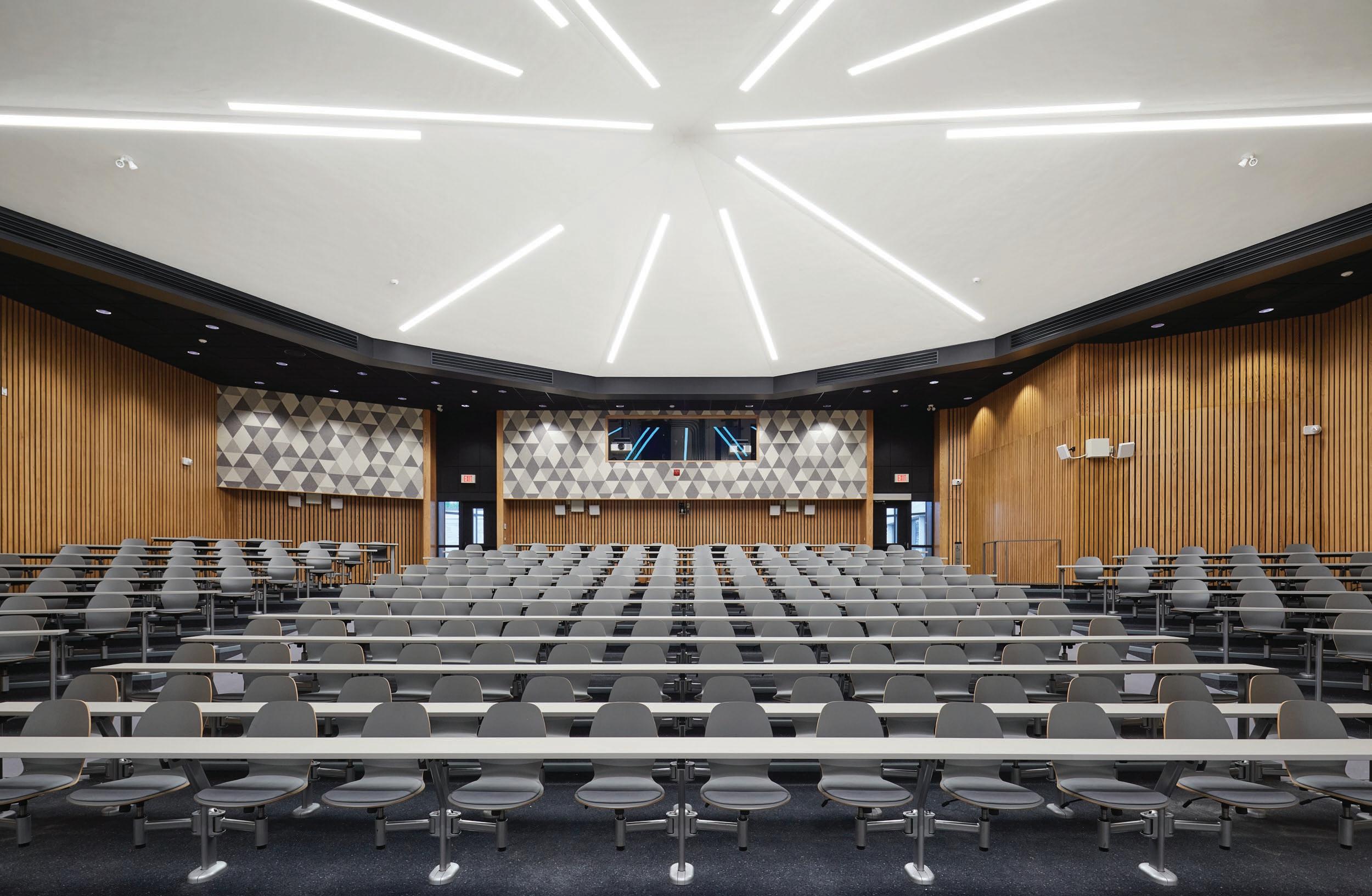
29 | Architectural & Engineering Services [AES]
Fletcher Argue Building, Room 200, Fort Garry Campus

Architectural & Engineering Services [AES] | 30
Education Building, Room 290, Fort Garry Campus

31 | Architectural & Engineering Services [AES]
Drake Centre Building, Room 122, Fort Garry Campus

Architectural & Engineering Services [AES] | 32
Armes Lecture Theatre, Room 204, Fort Garry Campus

33 | Architectural & Engineering Services [AES]
Duff Roblin Informal Learning Space, Fort Garry Campus

Architectural & Engineering Services [AES] | 34
Elizabeth Dafoe Informal Learning Space, Fort Garry Campus
HUMAN ANATOMY LAB

Basic Medical Sciences Building
Completion Date:
September 2019
Consultants:
Stantec Architecture and Consultants
General Contractor
Bockstael Construction Ltd.
Size
9,400 sq. ft.
Project Cost
$4,337,930
Sustainability Target
NA
The Human Anatomy Lab is located in the lower level of the Basic Medical Sciences Building. The lab had not been renovated since the building opened in 1975. The two primary labs were reconfi gured into three; two identical teaching labs and one research lab to accommodate technological advances, the learning style of today’s students, and the University’s pedagogical approach to interdisciplinary education. The fl exible, open, and bright labs are interconnected by several pairs of all glass doors and glass partitions.
The new research lab off ers enhanced technology with two surgical lights and video recording equipment to provide the faculty and clinicians with the tools to off er Distance Education and the facilities to host national conferences.
35 | Architectural & Engineering Services [AES]

CLINICAL SIMULATION LAB
Brodie Centre
Completion Date: August 2022
Consultants: Stantec Architecture and Consultants
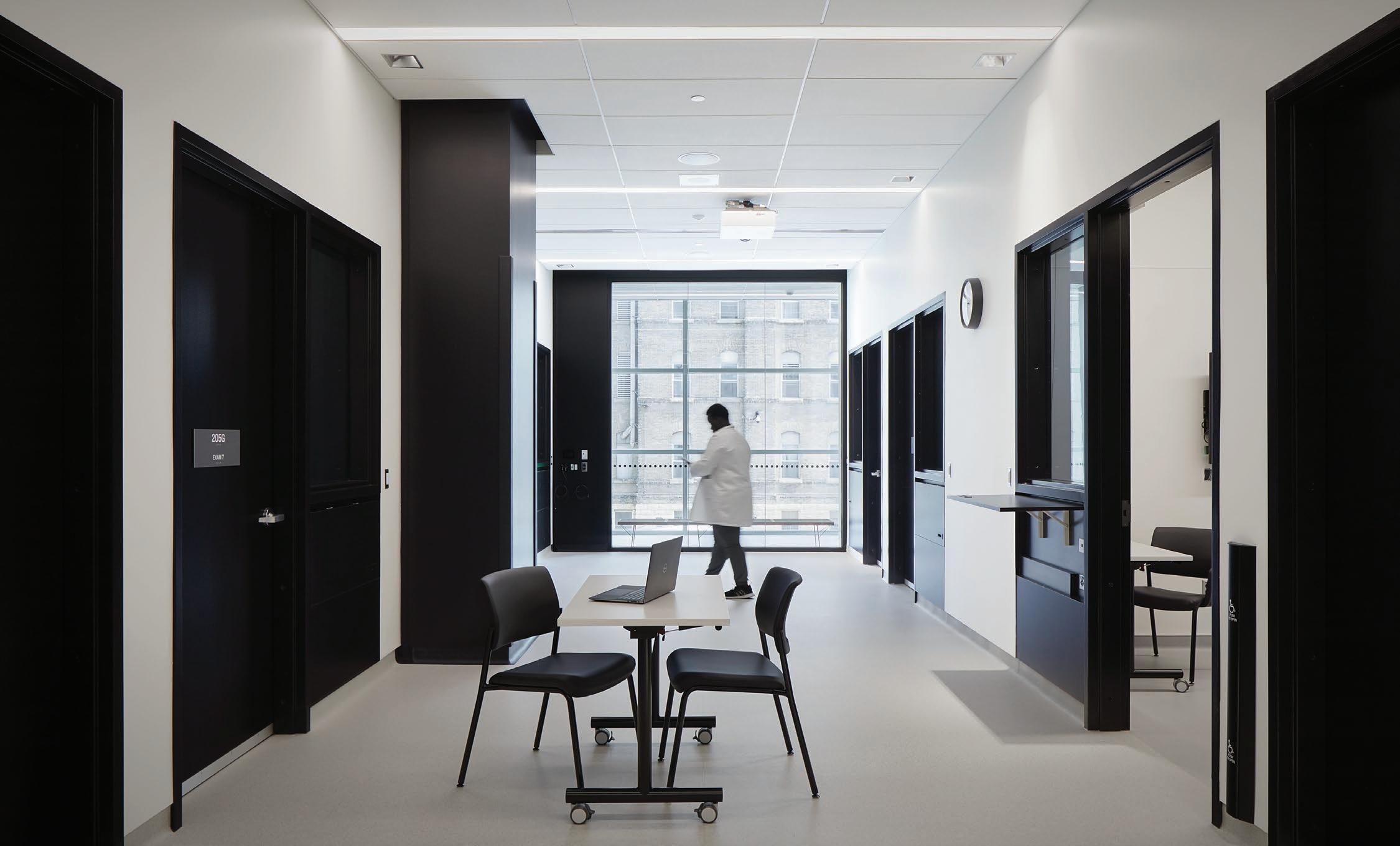
General Contractor: Marrbeck Construction Ltd.
Size: 3,549 sq. ft.
Project Cost: $3,238,905
Sustainability Target: NA
The Clinical Simulation Lab is located on the 200 level of the Brodie Centre. It is a highly technological facility with multiple types of simulators to support clinical assessment and communication skills for scenario-based teaching and to conduct practical exams.
The facility enhances students’ ability to communicate eff ectively with patients and families, and improve their interviewing and clinical assessment skills. The simulation program utilizes task trainers, standardized patients, immersive mannequin-based scenarios, and combinations of these approaches to recreate clinical events.
Each room is equipped with high-fi delity video cameras with real-time playback capability to facilitate evaluations and debriefing - central to the simulation teaching style.
37 | Architectural & Engineering Services [AES]

ROAD RENEWAL PROGRAM
Fort Garry Campus
Completion Date:
November 2022
Consultants:
KGS Group
Scatliff Miller + Murray
General Contractor:
2018 - Maple Leaf Construction Ltd.
2019 - Borland Construction Ltd.
2020 - Maple Leaf Construction Ltd.
2021 - Bayview Construction Ltd.
Size: 7 km
Project Cost: $11,000,000
Sustainability Target: N/A
The Fort Garry Campus includes approximately 7 km of roads (excluding Smartpark). Most of the roads on Campus have had nothing but patchwork for over twenty-fi ve years and these years of general maintenance and layers of patches have left the infrastructure in various states of repair. A high-level assessment of campus roads was previously done in-house and completed in 2014. In the fall of 2017, KGS Group was engaged and in January 2019 completed a Road Condition Assessment and Five (5) Year Capital Improvement Plan, which includes design and construction services for the Fort Garry Campus road network (excluding Smartpark). The 5-year capital improvement plan commenced in 2018 and in 2021 was fast-tracked to include two years’ worth of construction, which was possible due to reduced capacity on campus from COVID-19.
The Road Condition Assessment includes an updated inventory detailing current condition assessments and recommendations. The report details the current state of the roads, identifi es reasonable targets, provides life cycle cost analysis, optimization strategies and long-term budget estimates for the UM road network. The completed report supports forecasting and future budgeting for the rehabilitation, reconstruction and preventative maintenance strategies for campus roads.
In concert with the road renewal, utility renewal including but not limited to water main, sewer, chilled water and steam upgrades as well as landscape enhancements were included in the scope where possible. Area improvements included bank stabilization and native prairie revegetation, tree planting, sidewalk and pathway upgrades, seating, signage and wayfi nding throughout the road network.
2018 (Year 1) road renewal is complete and included the reconstruction of Freedman Cres. from King’s Dr. to Service St. 7 and the reconstruction of Saunderson St. beginning just east of Winnipeg Transit’s bus staging area entrance off Freedman Cres. and terminating east of Robson Hall on Dysart Rd.
2019 (Year 2) road renewal is now complete and included the reconstruction of University Cres. from Chancellor Matheson Rd. to Dafoe Rd. Work also included landscape improvements along University Cres., temporary raised pedestrian crossings on Dafoe Rd., the reconstruction of Freedman Cres. from Service St. 7 to the Winnipeg Transit bus staging area as well as bank stabilization for the City of Winnipeg primary dike and a multi-use pathway along Saunderson St./Dysart Rd. Native revegetation along the multi-use pathway and dike is currently underway.w
2020 (Year 3) road renewal is near complete pending deficiencies and landscape maintenance. Work included the reconstruction of Dafoe Road from University Cres. to Gillson St. Native revegetation of Dafoe Rd. boulevards is in-progress.
2021 (Year 4/5) road renewal is near complete pending defi ciencies and landscape maintenance. Work included the reconstruction of University Cres. and Freedman Cres. from Dafoe Rd. to King’s Dr., and the reconstruction of Gillson St. Utility renewals included water main, sewer, chilled water and steam upgrades. Landscape improvements included new sidewalk connections and multi-use paths, raised crossings, tree planting, and native revegetation.
The 5-year road renewal program was completed in 2022. Future road renewal priorities include Dysart Rd., Sifton Rd., MacLean Cres., Alumni Lane, Sidney Smith St., and Service St. 7.
39 | Architectural & Engineering Services [AES]
2018 2021 2019 FUTURE 2022 - City of Winnipeg 500 0 (FT) University Crescent Freedman Crescent Gravel Parking FreedmanCrescent University Crescent Service Street 1S Service Street 2S Service Road 1S Freedman Crescent University Crescent Dafoe Road Sifton Road Sifton Road Service Street 1SW Dafoe Road West Service Road 7S Dafoe Road Saunderson Street Alumni Lane Freedman Crescent Sifton Road Chancellors Circle Dysart Road Dysart Road Service Street 4S Gillson Street Dafoe Road Service Street 3S Service Road 2S Service Road 1S King's Drive MacLean Crescent FreedmanCrescent Matheson Road Service Road 3N Service Road 3N Saunderson Street Dysart Road Curry Place Service Road 2N Ralph Campbell Road Sidney Smith Street Dysart Road University Crescent Transit Staging Area Parking Lot 'L' Residence Gravel Contractor only Parking Parking Lot WC Gravel Parking Lot ACE Parking Lot 'B' Parking Lot A PARKING LOT 'P' Parking Lot A Parking Lot U Parking Lot U Parking Lot ALC Parking Lot ALC Parking Lot J Parking Lot O Parking Lot H Parking Lot CTC West Parking Lot CTC Parking Lot AC Parking Lot ACW Parking Lot 'Q' Parking Lot 'K' Parking Lot 'M' Parking Lot 'W' Parking Lot 'E' Parking Lot 'E' Parking Lot 'G' Parking Lot 'G' Parking Lot 'Y' Parking Lot 'Q' Parking Lot 'Z' Parking Lot 'R' Parking Lot 'E' Parking Lot "F" PARKING LOT "N" PARKING LOT "N" Parking Lot 'D' Parking Lot 'S' Parking Lot 'B' Parking Lot 'L' Parking Lot 'B' Parking Lot 'B' Parking Lot 'I' Parking Lot 'V' Parking Lot 'I' Stanley Pauley Engineering Campus Childrens Centre Addition Bike Repair Kiosk Energy Research Lab Science Greenhouse Tache Arts Complex-T2 Active Living Centre Investors Group Athletic Centre Robert B Schultz Lecture Theatre ARTlab Drake Centre Ellis MIM Machray Hall Armes Lecture Theatre Allen Physics Agriculture Plant Science Tache Arts Complex Plant Science Field Station Crop Technology Centre Isbister Tier Fletcher Argue Wallace Sinnott St. Paul's College St. John's College St. John's CollegeResidence Parker Chemistry Chancellors Hall University College Residence Robson Hall University College Duff Roblin Human Ecology Elizabeth Dafoe Library Dairy McQuadeScience Struc Lab Arthur V Mauro Residence Pembina Hall Pembina Hall Residence Mary Speechly Hall Central Energy Plant Ceramics Sculpture EITC E2 Administration Buller Biological Biological Science 55 Chancellors Circle Migizii Agamik Education 1 Education 2 Education 3 Stanley Pauley Centre EITC E1 EITC E3 John A Russell CAST 65 Dafoe Architecture 2 Dairy Barn Art Studio Ag Lecture Block T.K. CHEUNG Animal Science Research Animal Science Entomology Soil Science Equipment Shed St. Andrew's College Campus Childrens Centre Welcome Centre Frank Kennedy Centre Joyce Fromson Pool Extended Education Complex Max Bell Centre IGF - UM Bisons Football Stores PP Trailer Manitoba Agriculture & Animal Industry Freshwater Institute Physical Plant East Generator Flood Pump Station 1 North Generator HPCC Flood Pumping Station # 6 UMSU University Centre Helen Glass Centre Parkade Ag & Civil Eng CWB Grain Storage Research P-4 RED RIVER RED RIVER RED RIVER RED RIVER N Parking Lot 'Q' July 20 2023 Physical Plant Department Architectural and Engineering Services COMPLETE ROAD RENEWAL PROGRAM U OF M FORT GARRY CAMPUS 2018 2021 FUTURE 2019 2022 - CITY OF WINNIPEG 2020 2024 - UM PROPERTIES

04
ENERGY MANAGEMENT
ANNUAL ENERGY UPDATE
Energy effi ciency continues to improve at the University of Manitoba. Over the past 30 years, we have reduced energy use per square meter of building by 45%. Technology has helped us to maintain and enhance occupant comfort while consuming considerably less energy. We have significantly reduced energy waste. We have also improved and expanded our heat recovery systems to extract waste heat from areas with too much heat and move it across campus to other locations that require heat.
Energy Use Intensity
04
CAMPUS 125% 100% 75% 50% 25% 0% 20/21 18/19 16/17 14/15 12/13 10/11 08/09 06/07 04/05 02/03 00/01 98/99 96/97 94/95 92/93 90/91 100% 55% 71% 38% Natural Gas Energy Use Normalized for Population & Area Combined Total Energy 29% 17% Hydro Electricity Architectural & Engineering Services [AES] | 42
FORT GARRY
RE-FOCUSING OBJECTIVES
The University has already shifted its focus. We have expanded beyond improving energy effi ciency and facilities condition. Fifteen years ago, we began looking for opportunities to shift away from fossil natural gas and reduce greenhouse gas emissions.
The University recognizes the importance of being good stewards of our facilities and the environment. Effi ciency improvements clearly show how serious we are. In 2008, the University signed the University and College Presidents’ Climate Change Statement of Action for Canada, and we expanded our focus beyond energy effi ciency. We created an Energy Strategy in 2019 to document historic progress and to set out the several potential pathways forward to reduce emissions. The Energy Strategy provided the basis for most signifi cant measures identifi ed in the 2022 Climate Action Plan.
Electrical Consumption FORT GARRY CAMPUS
90/91 92/93 94/95 96/97 98/99 00/01 02/03 04/05 06/07 08/09 10/11 12/13 14/15 16/17 18/19 20/21 150% 130% 110% 90% 70% 50%
ected
weather,
population
• Power consumption is aff
by Campus
area, and
mechanical
lighting
ciencies improve
• Electrical Effi ciency is improving as
and
system effi
40%
• The Campus requires
less power per square foot and per person compared to FY90/91
CAMPUS AREA POPULATION ELECTRICAL CONSUMPTION ELECTRICAL CONSUMPTION (Normalized for Weather, Population, and Area) 43 | Architectural & Engineering Services [AES]
INVESTING IN CANADA INFRASTRUCTURE PROGRAM (ICIP)
Fort Garry District Energy System and Max Bell Centre Upgrades
Project Cost: $36.1M
Annual GHG emissions Reduction: 16k tonnes CO2eq/year
UM Cost: $21.7M
Federal Government ICIP Incentive: $14.4M
District Energy
Upgrades to the Central Energy Plant and the campus-wide district heating and cooling systems will signifi cantly reduce GHG emissions at the Fort Garry campus.
The Max Bell Centre is the campus recreational hub used year-round by the University and surrounding community. MBC measures include six high effi ciency air-handling units and an effi cient ice plant. The new ice plant is fully operational, and the ventilation upgrades will be installed during the summer of 2023.
District Energy Loops
The Central Energy Plant provides district heating and cooling to all campus facilities. CEP upgrades include a high effi ciency natural gas boiler, condensing heat recovery for all natural gas-fi red boilers, an electric boiler, a variable speed chiller, and additional electrical supply capacity. The CEP upgrades are in design with construction scheduled to begin in the fall of 2023.
Typ. of 3 Heat & Cool with District Heat Recovery (Most Bldgs) Heat Only (Eg. Residences) Heat & Cool using Heat Pumps (Eg Migizi Agamik) Process Heat Recovery (Eg. HPCC) Heat & Cool w/o District Heat Recovery (Few Bldgs) Chiller Typ. of 6 Cooling Tower Boiler Typ. of 2 Boiler
Central Energy Plant Campus Demand Architectural & Engineering Services [AES] | 44
HEATING FUEL CHOICES
Business As Usual
Electric
FORT GARRY CAMPUS MONTHLY HEATING LOADS (TJ) ANNUAL UTILITY COSTS ($M) 80 70 60 50 40 30 20 10 –Jan Feb Mar Apr May Jun Jul Aug Sep Oct Nov Dec
Base case reference for comparison to renewable alternatives 30 Year NPV Federal Carbon Charges $111 Fossil Natural Gas $253 M Total Heating Cost $364 M Emissions (tCO2e) 1,016 K $20 $15 $10 $5 $–1 2 3 4 5 6 7 8 9 10 11 12 13 14 15 16 17 18 19 20 21 22 23 24 25 26 27 28 29 30
Boilers 9MW of electric boiler capacity is added to utilize available renewable power 30 Year NPV Federal Carbon Charges $54 M Fossil Natural Gas $122 M Renewable Hydro Electricity $177 M Total Heating Cost $353 M Emissions (tCO2e) 492 K RNG & Electric Boilers Renewable Natural Gas displaces Fossil Natural Gas throughout the year 30 Year NPV Federal Carbon Charges $23 M Fossil Natural Gas $52 M Renewable Hydro Electricity $114 M Renewable Natural Gas $199 M Total Heating Cost $388 M Emissions (tCO2e) 208 K 80 70 60 50 40 30 20 10 –Jan Feb Mar Apr May Jun Jul Aug Sep Oct Nov Dec $20 $15 $10 $5 $–1 2 3 4 5 6 7 8 9 10 11 12 13 14 15 16 17 18 19 20 21 22 23 24 25 26 27 28 29 30 80 70 60 50 40 30 20 10 –Jan Feb Mar Apr May Jun Jul Aug Sep Oct Nov Dec $20 $15 $10 $5 $–1 2 3 4 5 6 7 8 9 10 11 12 13 14 15 16 17 18 19 20 21 22 23 24 25 26 27 28 29 30 Fossil Natural Gas Federal Carbon Charges Fossil Natural Gas Renewable Hydro Electricity Renewable Hydro Electricity Renewable Natural Gas Renewable Natural Gas 80% GHG Reduction Avoids $88 M Federal Carbon Charges 52% GHG Reduction Avoids $57 M Federal Carbon Charges 45 | Architectural & Engineering Services [AES]
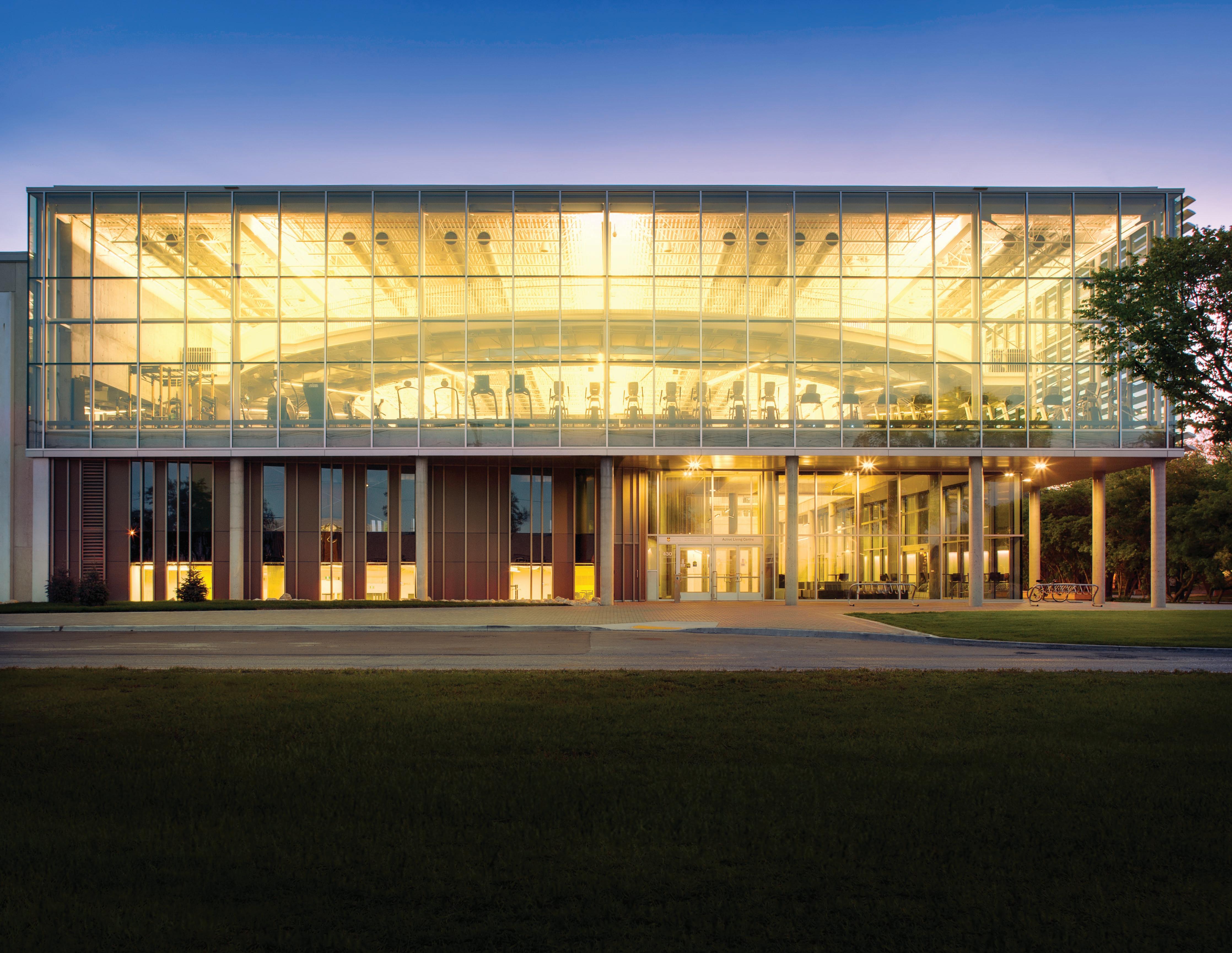

05
05ACCESSIBILITY
The University of Manitoba strives to be a leader in creating an inclusive experience for students, staff, and visitors. The University’s academic, research, administrative, residential, and special purpose buildings are no exception to that pursuit and refl ect the care and dedication of staff and management to the University of Manitoba’s core values.
Aligning with the Accessibility for Manitobans Act, and the University of Manitoba’s commitment to fostering and providing an accessible environment, the University has embarked on a University-wide accessibility audit of the built environment. A draft report was completed by Adaptability Canada in 2019 that identifi ed barriers in the core areas of safety impact, compliance issues, and service improvement with the top improvement areas campus-wide noted as wayfi nding/signage; physical access; life safety; lighting and contrast; washrooms; external pathways and building thresholds. In order to expand on the initial observations, a Consultant Team led by Level Playing Field (LPF) has been engaged to complete the audit and deliver a report of their fi ndings. The fi nal report will include a prioritization plan identifying accessibility project for UM campuses, and a 10-year capital improvement plan identifying projects for the near/immediate term (1-2 year), mid-term (3-5 year), and long-term (6-10 years).
LPF is a consulting agency that provides innovative Universal Design solutions based on the social model of disability. LPF applies a social justice framework to their evaluations and accessible best practice recommendations for all urban environments. LPF is a leader in accessibility in Canada and will guide UM through the built environment accessibility audit project. The Consultant Team’s site auditing is complemented by their ability to conduct extensive qualitative research and meaningful stakeholder engagement through their knowledge of national building code, accessibility standards, and best practice.
The Audit methodology examines how people use the environment while also identifying code variances and life/safety issues that create barriers to access. A key aspect of creating barrier-free campuses is ensuring that access to campus facilities can be accomplished by an individual while maintaining their psychological comfort and dignity.
The top areas for improvement University-wide are:
• Wayfi nding/Signage
• Physical Access
• Life Safety
• Lighting and Contrast
• Washrooms
• External Pathways and Building Thresholds
Architectural & Engineering Services [AES] | 48

INTEGRATING WITH CAPITAL PROJECTS
The University of Manitoba is dedicated to implementing the audit fi ndings and move towards a more inclusive, barrier-free University. Ongoing projects are addressing the observations and recommendations of the audit as opportunities arise. Over the last fi ve years approximately $5.5M has been invested in building entrance improvements, automatic door operators, elevator upgrades and lift replacements. In addition to these improvements, capital projects continue to focus on accessibility improvements University-wide. Projects include single stall washroom renovations for all users, the development of an online inventory of gender inclusive washrooms, signage upgrades, and learning space upgrades.
ROADWORKS RENEWAL
The Fort Garry campus Road Renewal Program commenced in 2018, based on recommendations from a road condition assessment of the current Fort Garry campus road network, approximately 22,935 linear feet of roads (excluding Smartpark). The condition assessment fl agged campus roads in various states of disrepair for strategic repairs and renewals. The program has included the reconstruction of Saunderson Street, Freedman Crescent, Dafoe Road, Gillson Street, and University Crescent. New pedestrian and cycling infrastructure and landscape improvements address uneven walking surfaces, separation of transportation modes, seating and rest areas, and frequency of crosswalks.
CAMPUS WAYFINDING
The University is pursuing a wayfi nding strategy that utilizes a redesign of University of Manitoba signage elements to increase the clarity of external wayfi nding and tunnel signage. The accessibility concerns revealed in the audit are continuously reviewed through upcoming projects such as washroom renewals, the addition of more gender-inclusive facilities on campus, and accessible parking.
AGE-FRIENDLY INITIATIVE (FIRST AGE-FRIENDLY CAMPUS IN CANADA)
Since joining the Age-Friendly University Network in 2016, the University of Manitoba continues to work towards achieving a campus environment that is welcoming to all. In 2021, AES, in partnership with the Offi ce of Sustainability participated in the fi rst Age Friendly University Initiative Fund led by the UM Centre on Aging. The purpose of the Age-Friendly University Fund was to increase age-friendliness of the University of Manitoba. The Tunnel Wayfi nding Signage project included recommendations to address defi ciencies in existing campus wayfi nding signage and explored ways to make the campus tunnel system more accessible and easier to navigate for all. The project generated ideas to improve interior wayfi nding maps as well as address defi ciencies in the tunnel system, such as tunnel access indicators, building and zone identifi cation, and cohesive signage with consistent graphics throughout.
Architectural & Engineering Services [AES] | 50

06
LIFE SAFETY
The life safety of our University of Manitoba occupants is a very high priority. AES employs an in-house life safety professional whose job involves fi nding that balance between fi scal effi ciency and the highest possible safety standards.In addition, the Life Safety Engineer acts as the liaison on behalf of the University of Manitoba for the Winnipeg Fire Department. The Life Safety Engineer prioritizes a list of necessary upgrades on campuses and works with the AES project staff to proactively include priority life safety system upgrades with new design projects wherever feasible.
This approach creates effi ciency from both a time and cost perspective. Additionally, the Life Safety Engineer has a number of active ‘stand-alone’ initiatives in progress that are both saving money for the U of M and improving safety for students, staff and visitors on campus. The Life Safety Engineer also works closely with the Winnipeg Fire Department to ensure that the operation and maintenance of life safety systems are compliant with all legal requirements.
LIFE SAFETY COMMITTEE
The Life Safety Committee consists of the LIfe Safety Engineer, Operations and Maintenance Trade Shops and EHS Safety Offi cers. The Life Safety Engineer chairs the meetings quarterly to review all life safety systems and fi re safety management for all campuses. This program provides UM students and staff with integrated fi re and life safety protection.
SUPPORT CULTURE NEEDS
The Life Safety Engineer recognizes that Indigenous students, faculty, staff, and community engage in a variety of traditional ceremonies, including and not limited to smudging and pipe ceremonies. New fi re protection technology has been adopted to perform smudging ceremonies on campus while maintaining building life safety. A list of areas where smudging could be performed without life safety shutdowns has been created.
CONSTRUCTION SITE FIRE SAFETY
The Life Safety Engineer reviews all hot works to ensure fi re safety while mitigating program impacts. In addition to improved fi re safety on construction sites, contractor-related unwanted alarms have been signifi cantly reduced over the past few years.
CRITICAL BUILDING LIFE SAFETY UPGRADES
Approximately $3M was allocated to install a state-of-the-art fi ne mist fi re suppression system at the Central Energy Plant. This installation will improve life safety and ensure business continuity is not disrupted should a fi re happen at this facility.
06
Architectural & Engineering Services [AES] | 52
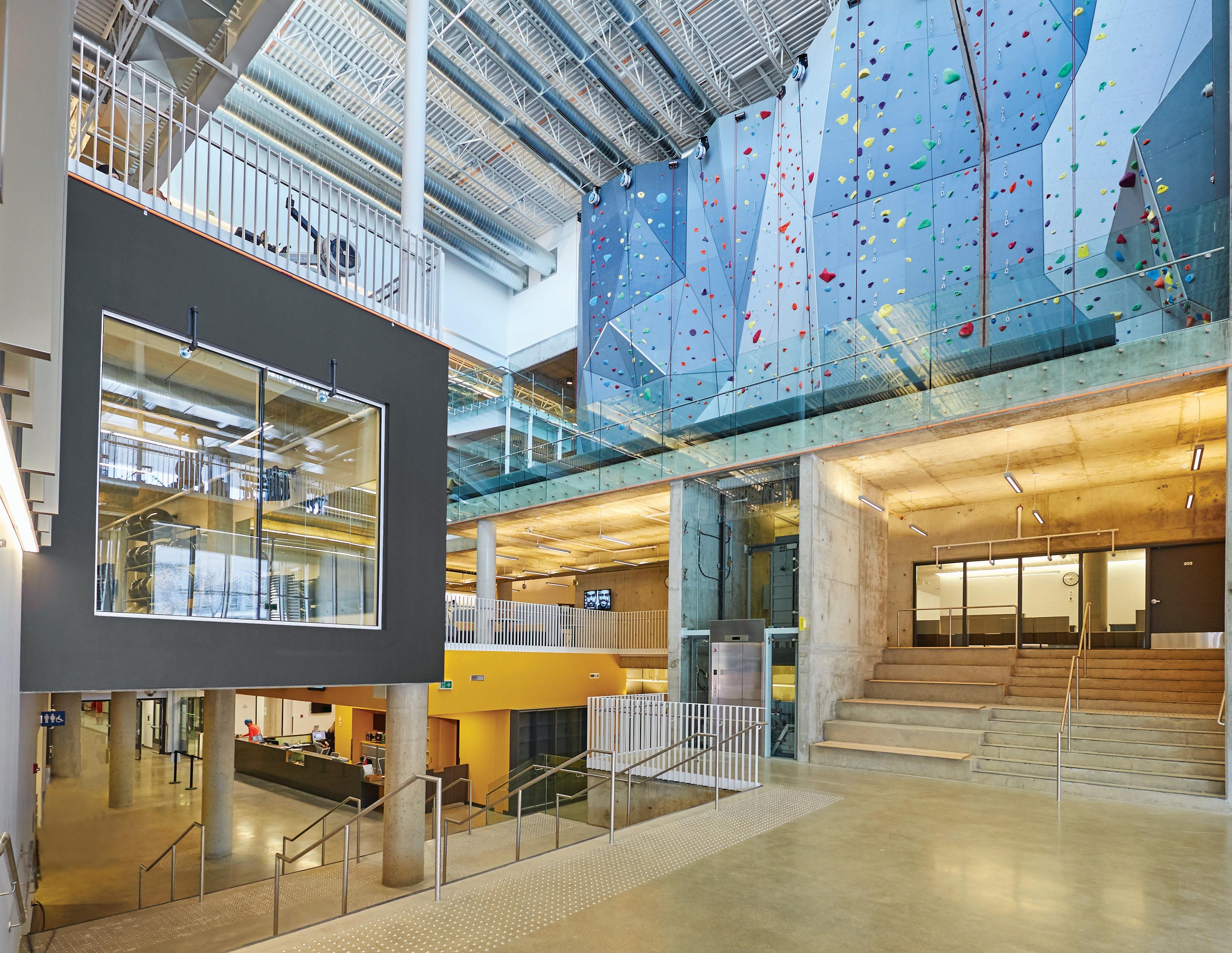
DISTRIBUTION OF FIRE ALARMS IN 2021 Contractor 28% Faulty Equipment 27% Staff/Student 14% Actual Fire/Gas 9% Smell 7% Mischief 6% Weather/ Environment 4% Electrical 4% Cooking 1% TOTAL NUMBER OF FIRE ALARMS 2015-2021 180 160 140 120 100 80 60 40 20 0 2015 2017 2018 2019 2020 2021 154 114 110 127 96 86 2016 data unavailable Architectural & Engineering Services [AES] | 54


07
SUSTAINABLE BUILDING DESIGN GUIDELINES
New in 2023, the Sustainable Building Design Guidelines work within the size and scope of each AES project to further implement elements of social, fi nancial, and environmental sustainability throughout. The goal of these Guidelines is to foster sustainable, beautiful, and welcoming spaces at the University of Manitoba, while working to reduce greenhouse gas emissions.
The Guidelines focus on elevating the outcome of projects through enhanced commissioning, improved integrated design and life-cycle costing, amplifi ed integration of the UM Indigenous Planning and Design Principles, and more intentional decommissioning and deconstruction. Fundamental elements that are focused on within projects include but are not limited to the tracking and calculating of embodied carbon, limiting waste during construction and building usage, further energy effi ciency improvements, and greenhouse gas emissions reductions.
Post COVID-19, the Guidelines highlight the importance of providing a suffi cient variety of activity-appropriate spaces while avoiding the presence of underutilized areas. The Guidelines promote designing the campus for fl exibility and adaptability, while also utilizing a remote work model that puts less strain on the aging buildings of the University.
Also considered in the Guidelines are public realm and infrastructure spaces, focusing on ways in which to ensure the UM is creating a campus that maintains stability with the outdoor environment. This is accomplished through an enhanced focus on elements such as improved stormwater features, conservation and cultivation of native plants, and ensuring our campus is connected through muti-modal transit networks.
To ensure consistency, clarity, and excellence across developments, the Guidelines use external certification system standards such as Leadership in Energy and Environmental Design (LEED) and SITES in combination with geographically specific successes as a benchmark for advancement.
By incorporating social, fi nancial and environmental elements of sustainability into all stages of new construction, renovations and public realm projects, the Guidelines are working in concert with the UM Climate Action Plan, the 2019-2023 Sustainability Strategy, and the UM Space Policy. In the context of Manitoba, the Guidelines uphold the Manitoba Green Building Policy and recognize the availability and necessity of integrating Effi ciency Manitoba standards into all applicable programming.
07
Architectural & Engineering Services [AES] | 56
